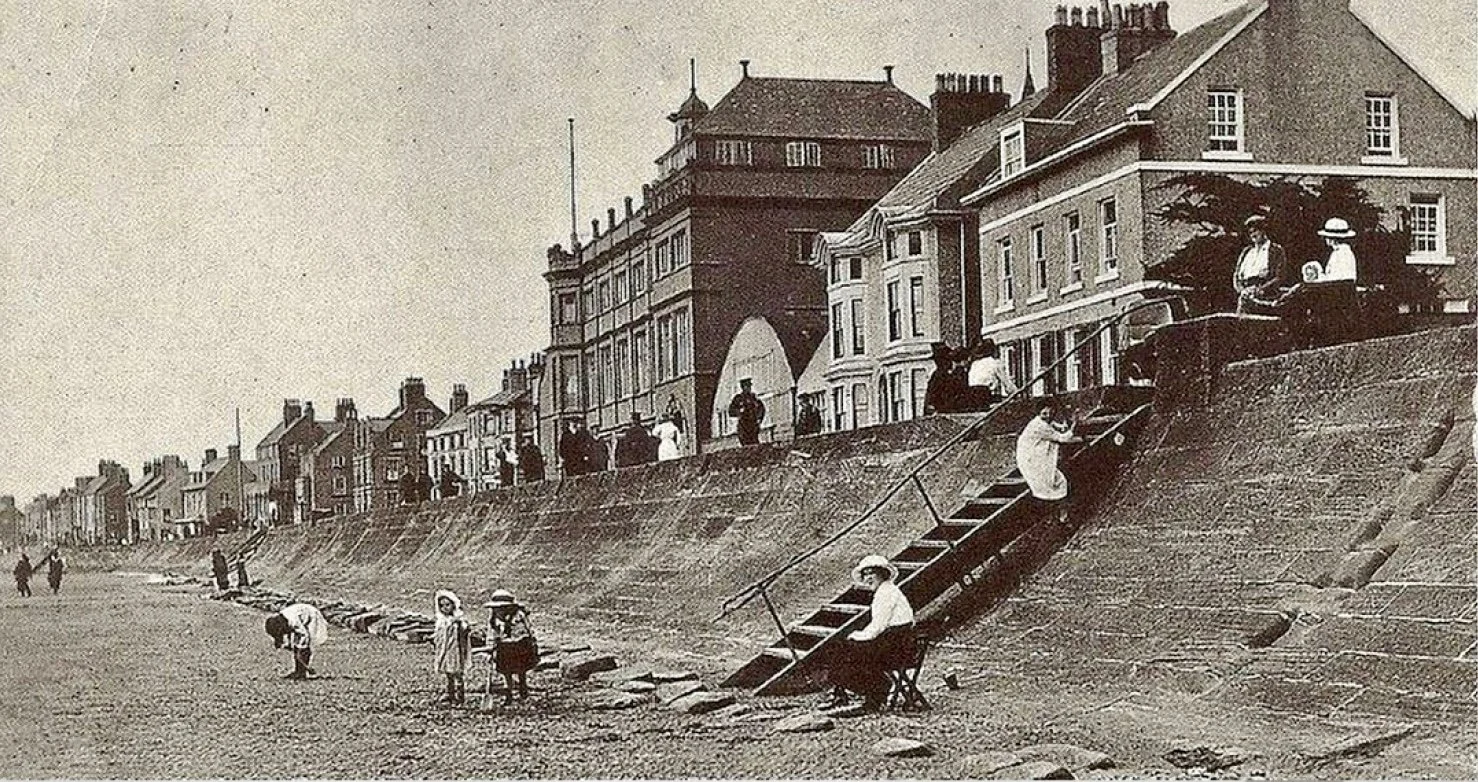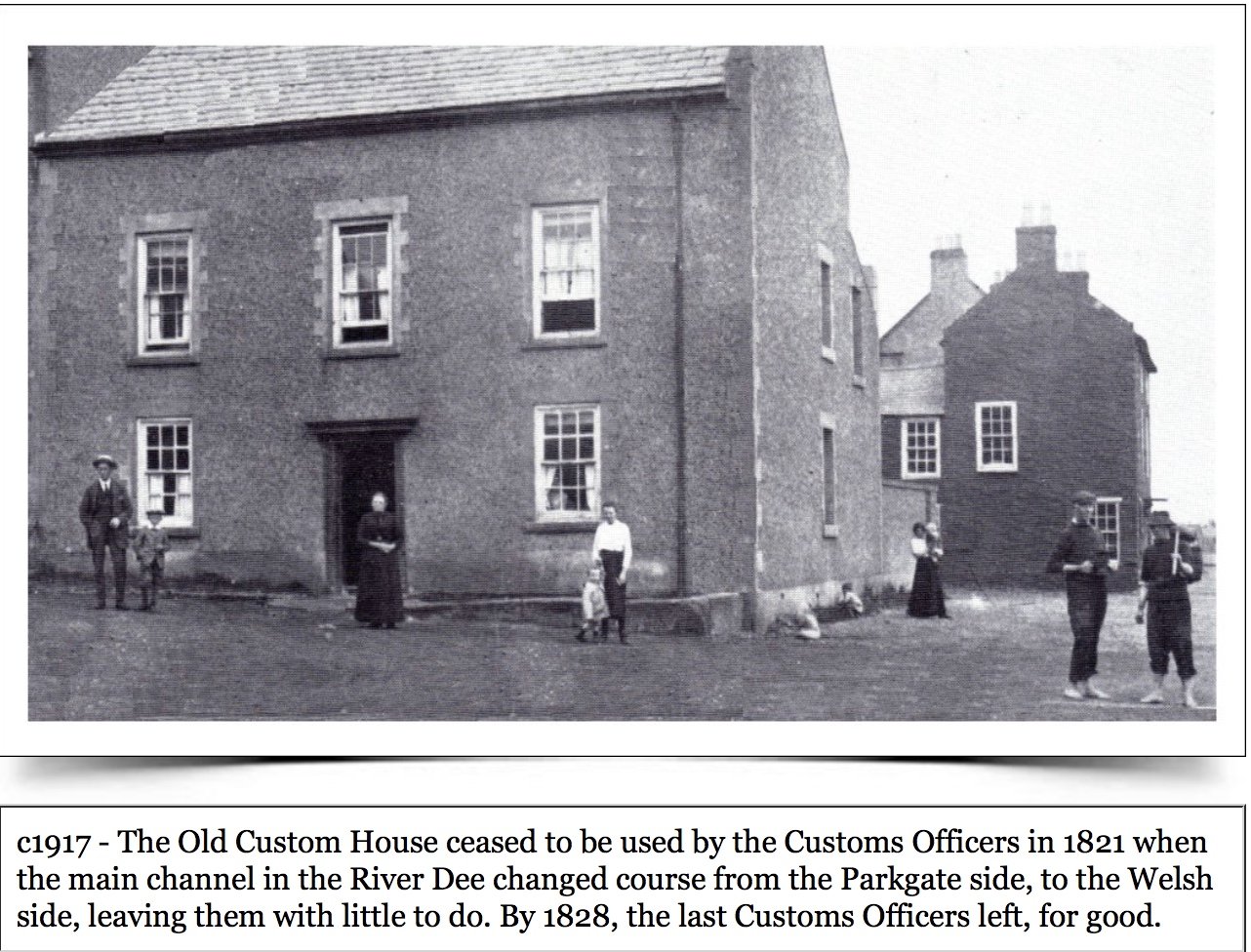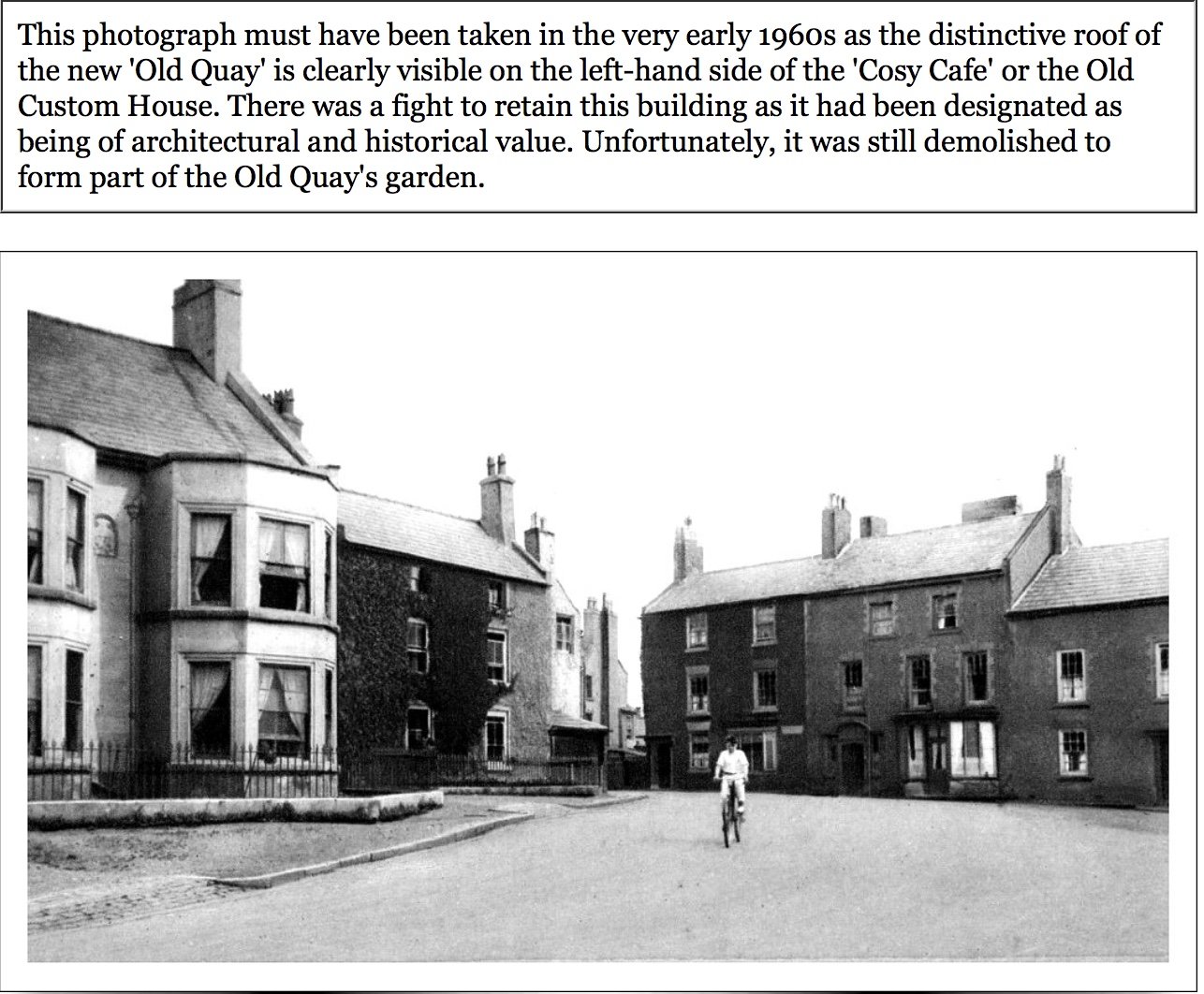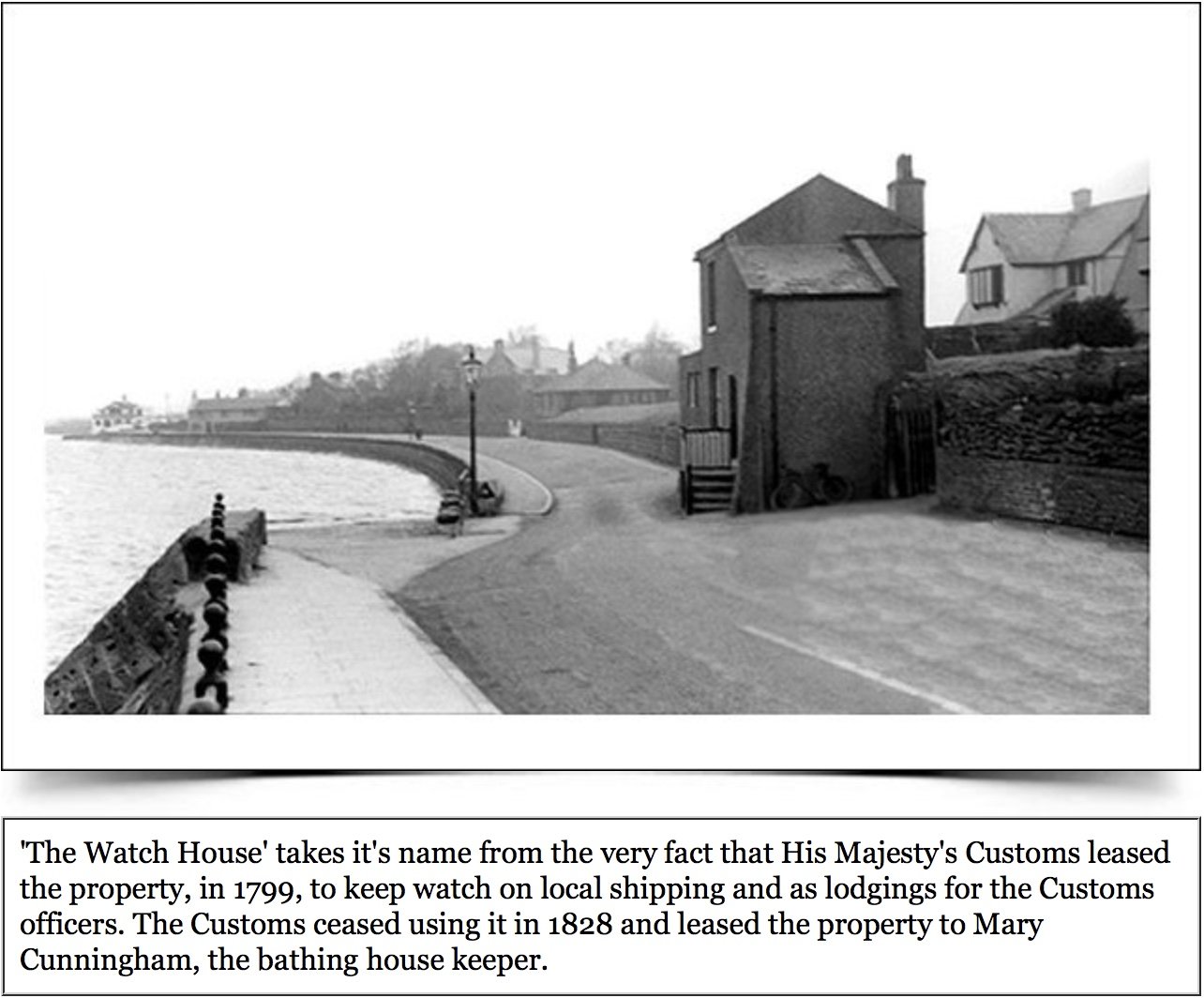Smugglers
Smuggling was prevalent along the Wirral coast during the 18th century and Parkgate, with its shipping trade, certainly played a part in this activity. The government revenue men, generally outsiders, were kept busy trying to control the situation. Contraband goods were brought over from the Isle of Man, where tax rates were much lower than on the mainland, and spirited ashore from ships anchored in the channel, mainly at night, when there was less chance of the smugglers being caught. A number of Parkgate properties had connections with smuggling. It is a common belief that the former Sawyer’s Arms, for example, received some of its liquor as contraband.
The first customs house in Parkgate was a small, narrow building erected on the shore, where the Donkey Stand is now. This building was taken out of revenue use when a larger building was later built at the seaward end of Station Road. This later building survived until 1962, when it was demolished and incorporated into the site of the Old Quay.
Because this customs house was not well situated for watching what might be going on at the other end of The Parade, the Customs service, in 1799, hired a former coastguard’s look-out, now The Old Watch House, for its officers to keep an eye on the shipping in this area. However, customs staffing was reduced in 1820 to a single officer, as a result of the end of coal exports from Denhall Quay and the import of cattle through Parkgate. These two premises were then both de-commissioned and put to other use in 1828, when it was clear that there was no longer any revenue to be raised from shipping and smuggling was no longer a serious problem, due to the cessation of maritime trading through Parkgate.
Last Updated April 2022



